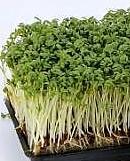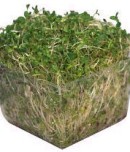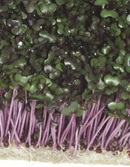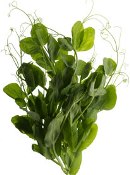Sprouts
Sprouting Seeds – All natural edible sprouts and offer both flavor and nutrients for most dishes throughout the world, and have become a staple for many worldwide diets. They are easy to grow, economical, and 1 pound of sprouting seed can usually generate about 5 pounds worth of sprouts!
Diakon Radish | Broccoli | Cress
Red Acre Cabbage | Peas
 Diakon Radish Sprouts
Diakon Radish Sprouts
Vitamins A, B, C, E, and K are all present in radish sprouts, along with zinc, calcium, and iron. Radish sprouts also have a mild peppery flavor, just like radish plants, and some people find this flavor enjoyable. Since other sprouts can be a bit bland or dull, radish sprouts can make a pleasant contrast with their brief hit of spice. The sprouts can be eaten raw or very lightly cooked source: Radish sprouts.
Back to Top
 Broccoli Sprouts
Broccoli Sprouts
Broccoli sprouts are much higher than mature broccoli heads in delivering a biochemical called sulforaphane, which has previously been shown to have potentially anticancer effects. The compound appears to work by triggering the body, especially the gastrointestinal tract, to produce enzymes that protect against damage-causing chemicals and inflammation.
Back to Top
 Cress Sprouts
Cress Sprouts
Cress sprouts are a great addition to many dishes, and contain considerable amounts of calcium, potassium, iodine, iron, and phosphorus. They also have purifying qualities and help control sugars.
Back to Top
 Red Acre Cabbage Sprouts
Red Acre Cabbage Sprouts
Cabbage Sprouts Are High in Vitamin A, C, U, along with trace elements iodine and sulfur. When exposed to light, sprouts are high in Chlorophyll.
Back to Top
 Pea Sprouts
Pea Sprouts
Sprouting peas increase their sugar content, giving pea sprouts a sweet vegetable flavor. Wrinkled or smooth varieties work equally well. When root is 2 inches long, they are ready to eat raw, or need only 5 minutes for cooking.
Back to Top

